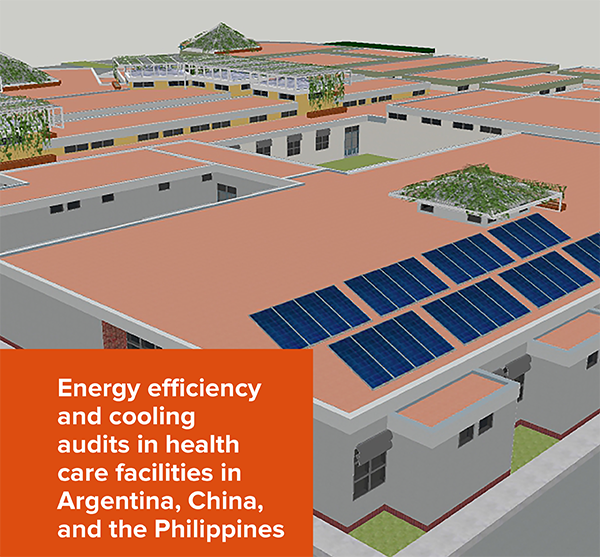Cooling is responsible for 7% of global greenhouse gases (GHG) emissions - and the health sector is a large consumer of cooling services. Several critical aspects of health care delivery are contingent on cooling, such as the conservation of cold chains for vaccines, food, or drugs, the maintenance of operational temperatures for medical equipment, and setting comfort temperatures for patients and staff, to name some.
The Kigali Cooling Efficiency Program (K-CEP) addressed this problem via energy audits focused on cooling in hospitals in Argentina, China, and the Philippines. K-CEP was funded by the ClimateWorks Foundation and implemented by Health Care Without Harm and its partner the Rock Environment and Energy Institute (REEI).
A phased approach
The project was implemented between 2019 and 2021. Stage 1 included the setting of the project, audits, and the facilities’ action plans, while Stage 2 was dedicated to the piloting of energy efficiency projects.
Selected hospitals
Argentina
- Dr. J. P. Garrahan Hospital, Buenos Aires.
- Rosario Outpatient Medical Specialties Center (CEMAR), province of Santa Fe.
- Hospital Dr. José Giordano of Albardón, province of San Juan.
China
- Beijing Ditan Hospital, Beijing.
- Qinhuangdao Maternity and Children Hospital, province of Hebei.
- Beijing Huilongguan Hospital, Beijing.
- Beijing Fuwai Hospital, Beijing.
The Philippines
- Amang Rodriguez Memorial Medical Center, Metro Manila.
- Philippine General Hospital, Manila.
- St. Paul's Hospital of Iloilo, Panay Island.
* Hospitals in bold were selected to implement the demonstration projects
The audits were conducted in 2019, and the final reports informed on each hospital’s energy use profile, the characteristics of the cooling equipment and refrigerants, opportunities to improve the system's efficiency, and a list of general and specific recommendations for a more efficient and clean operation.
Based on these results, all the hospitals implemented plans for cooling optimization that included:
- Creation of energy committees or energy manager positions.
- Development of training and communication programs.
- Processes to improve energy consumption measurement and access to information.
At the end of Stage 1, one hospital in each country was selected for a demonstration project.
Demonstration project
Results and next steps
The Final Report presents comprehensive information about the project and the case studies explain details of the pilots implemented at Dr. José Giordano Hospital of Albardón (Argentina), Beijing Huilongguan Hospital (China), and the St. Paul´s Hospital of Iloilo (Philippines).
A sample Terms of Reference was developed for facilities that want to conduct energy audits, as well as a Checklist to assess the center's work in cooling and energy efficiency.
The results and tools created are coordinated with other Health Care Without Harm initiatives such as the Climate Impact Checkup for health care facilities and the Sustainable Health in Procurement Project (SHiPP).
Note: the Kigali Cooling Efficiency Program (K-CEP) changed its name to the Clean Cooling Collaborative.

